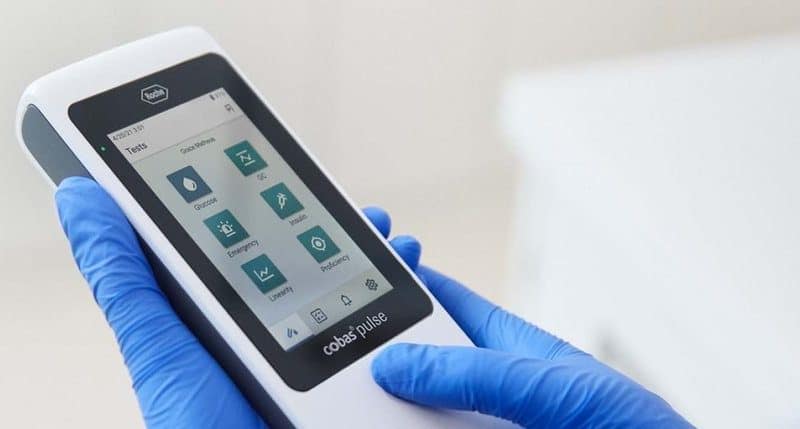Roche has launched its new point-of-care blood glucose monitor designed for hospital professionals, with a companion device shaped like a touchscreen smartphone that will run its own apps.
The cobas pulse will start shipping to select countries in Europe, carrying a CE mark, Roche said during the J.P. Morgan Healthcare Conference. The company said it plans to seek clearances in the U.S. and other markets over the course of this year.
The Big Pharma’s diagnostics division tapped diabetes cloud provider Glytec to supply software for the device—its Glucommander insulin-dosing program—to help streamline the complex task of managing blood sugar levels during a patient’s hospital stay.
“Frontline health workers are under increasing pressure to not only accurately diagnose patients, but also make appropriate decisions on all aspects of disease management and patient care,” Roche Diagnostics CEO Thomas Schinecker, Ph.D., said in a statement.
The hand-held cobas pulse includes an automated glucose test strip reader as well as a camera and touchscreen for logging other diagnostic results, all in a hardened body that can be cleaned with disinfectants. It’s designed to be used with patients of all ages, including neonates and people in intensive care.
Glytec’s Glucommander first won an FDA clearance in 2006, and it has since become a core part of the company’s eGlycemic Management System, a medical decision support program for insulin titration. It includes modules for inpatients receiving nutrition via a feeding tube, and it can recommend doses for a variety of insulins given intravenously or subcutaneously.
The software has been shown to reduce episodes of severely low blood sugar by 99.8%, according to Glytec, while lowering the rate of readmissions and the length of hospital stays.
The cobas pulse aims to streamline clinicians’ workflow by running the Glucommander dosing software on the blood sugar reader itself—alongside other downloaded decision-support apps from companies including Smart4Diagnostics, imito, decide, CardioSignal and SteadySense.

